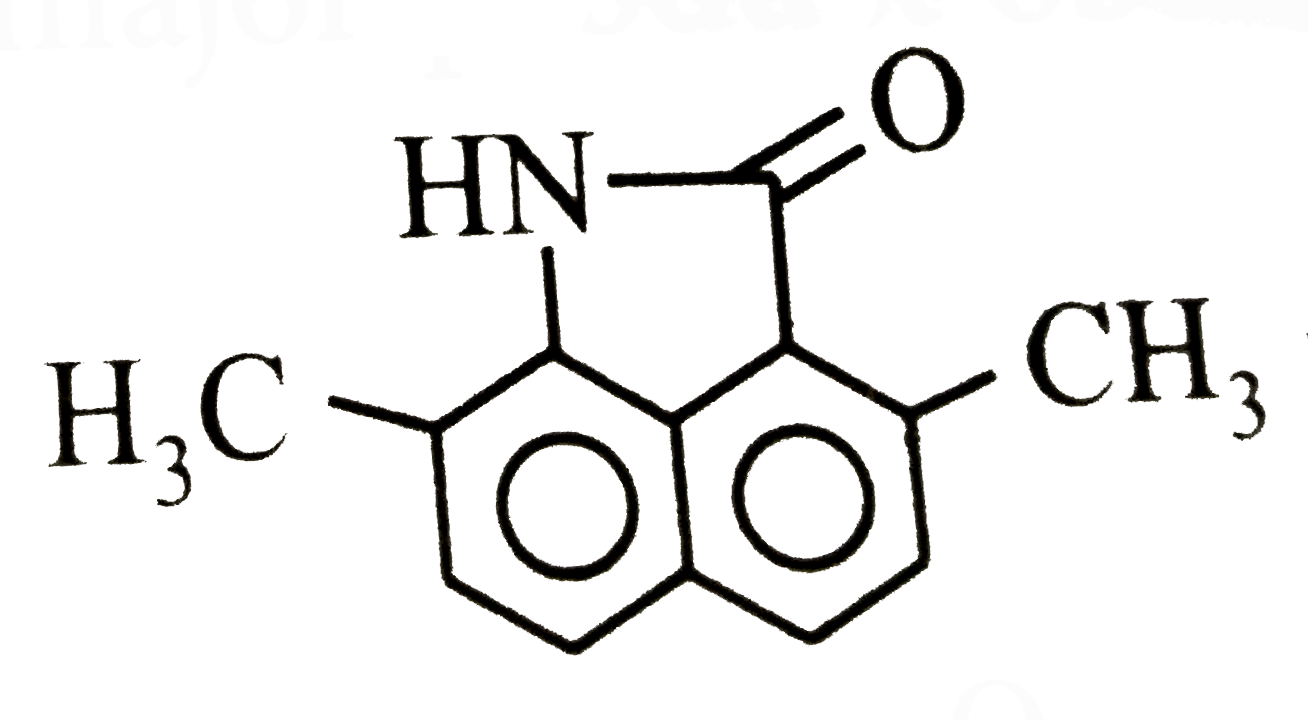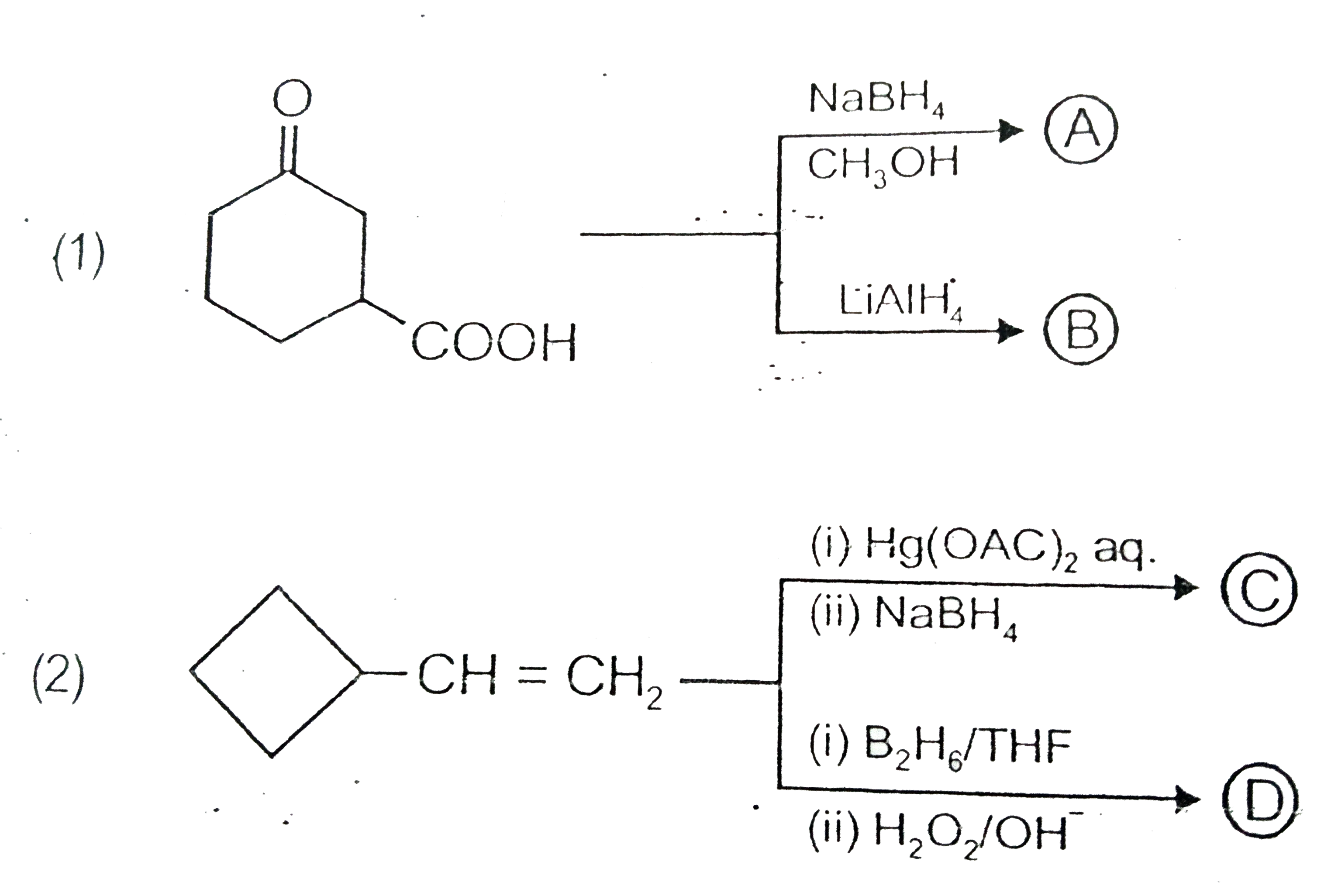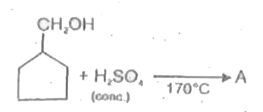What will be the major product when 2−Aminopropane is treated with nitrous acid ?
1− Propanol
2− Propanol
Propene
Cyclopropane
The correct Answer is:2
To determine the major product when 2-aminopropane is treated with nitrous acid, we can follow these steps:
Step 1: Identify the Structure of 2-Aminopropane
2-aminopropane has the following structure:
- It is an amine with the formula CH3-CH(NH2)-CH3.
- This means there is an amino group (NH2) attached to the second carbon of a three-carbon chain.
Step 2: Reaction with Nitrous Acid
When 2-aminopropane is treated with nitrous acid (HNO2), a diazonium salt is formed. The reaction can be represented as follows:
- The amino group (NH2) reacts with nitrous acid to form a diazonium salt (R-N2^+), where R is the rest of the molecule.
Step 3: Formation of Diazonium Salt
The diazonium salt formed from 2-aminopropane is:
- CH3-CH(N2^+)-CH3 + Cl^-
- Here, the nitrogen from the amino group is replaced by a diazonium group (N2^+).
Step 4: Decomposition of Diazonium Salt
Diazonium salts are generally unstable, especially when there is no resonance stabilization. Therefore, the diazonium salt will decompose:
- The diazonium salt loses nitrogen gas (N2) and forms a carbocation (R^+).
Step 5: Formation of the Final Product
The carbocation formed is stabilized by the presence of water (H2O), which provides hydroxide ions (OH^-):
- The carbocation will react with water to form an alcohol.
- The final product is 2-propanol (CH3-CHOH-CH3).
Conclusion
The major product when 2-aminopropane is treated with nitrous acid is 2-propanol.
Final Answer:
The major product is 2-propanol.
---
2-aminopropane has the following structure:
- It is an amine with the formula CH3-CH(NH2)-CH3.
- This means there is an amino group (NH2) attached to the second carbon of a three-carbon chain.
When 2-aminopropane is treated with nitrous acid (HNO2), a diazonium salt is formed. The reaction can be represented as follows:
- The amino group (NH2) reacts with nitrous acid to form a diazonium salt (R-N2^+), where R is the rest of the molecule.
The diazonium salt formed from 2-aminopropane is:
- CH3-CH(N2^+)-CH3 + Cl^-
- Here, the nitrogen from the amino group is replaced by a diazonium group (N2^+).
Diazonium salts are generally unstable, especially when there is no resonance stabilization. Therefore, the diazonium salt will decompose:
- The diazonium salt loses nitrogen gas (N2) and forms a carbocation (R^+).
The carbocation formed is stabilized by the presence of water (H2O), which provides hydroxide ions (OH^-):
- The carbocation will react with water to form an alcohol.
- The final product is 2-propanol (CH3-CHOH-CH3).
The major product when 2-aminopropane is treated with nitrous acid is 2-propanol.
The major product is 2-propanol.
Topper's Solved these Questions
- NITROGEN CONTAINING COMPOUNDSBook:RESONANCE ENGLISHChapter:NITROGEN CONTAINING COMPOUNDSExercise:ORGANIC CHEMISTRY(Nitrogen containing Compounds)
Explore 30 Videos
- NITROGEN & OXYGEN FAMILYBook:RESONANCE ENGLISHChapter:NITROGEN & OXYGEN FAMILYExercise:Part-III Practice Test-2 (JEE (Advanced Pattern))
Explore 23 Videos
- NUCLEAR CHEMISTRYBook:RESONANCE ENGLISHChapter:NUCLEAR CHEMISTRYExercise:STAGE-II
Explore 1 Video
Similar Questions
Knowledge Check
2-Bromopentane is treated with alcoholic KOH solution. Whatt will be the major product formed in this reaction and what is the type of elimination called?
APent-1-ene, β-EliminationBPent-2-ene, β-eliminationCPent-1-ene, Nucleophilic substitutionDPent-2-ene, Nucleophilic substitution.
What will be the major product of the reaction given ?

View SolutionWhat will be the product when benzaldehyde is treated with NaOD in D2O ?
View SolutionThe mojor product obtained when Br2/Fe is treated with

View SolutionWhat will be the major product obtained when 2-bromobutane reacts with alcoholic potassium hydroxide ? State the type of reaction involved in it.
View SolutionWhat is the major product obtained when 2-bromobutane is heated with alcoholic KOH? Write only the major product expected to be obtained.
View SolutionWhat are the major products when NO+2 (nitronium) reacts with
_E01_273_Q01.png)
View SolutionWhat is the major product of the following

View Solution


